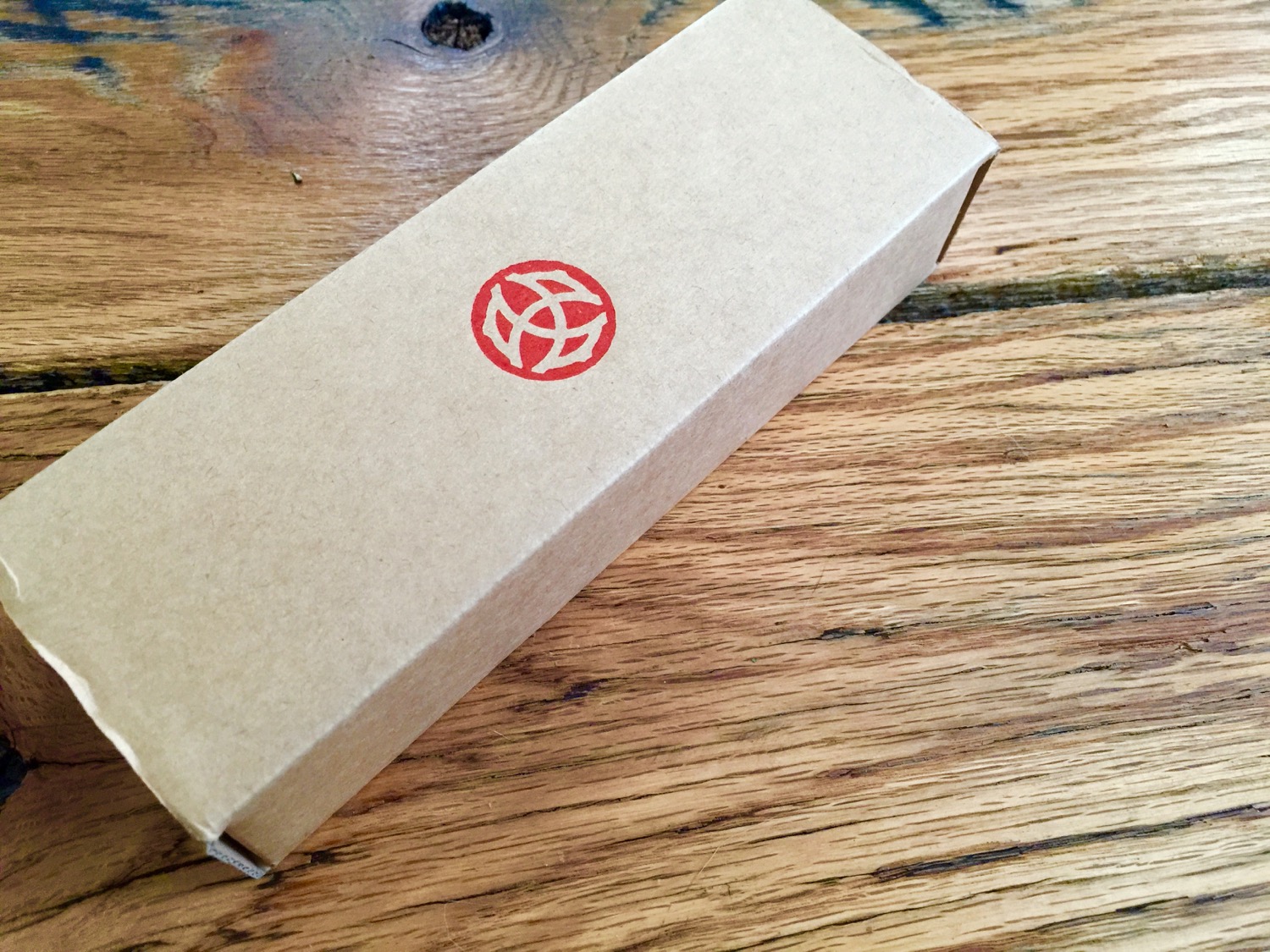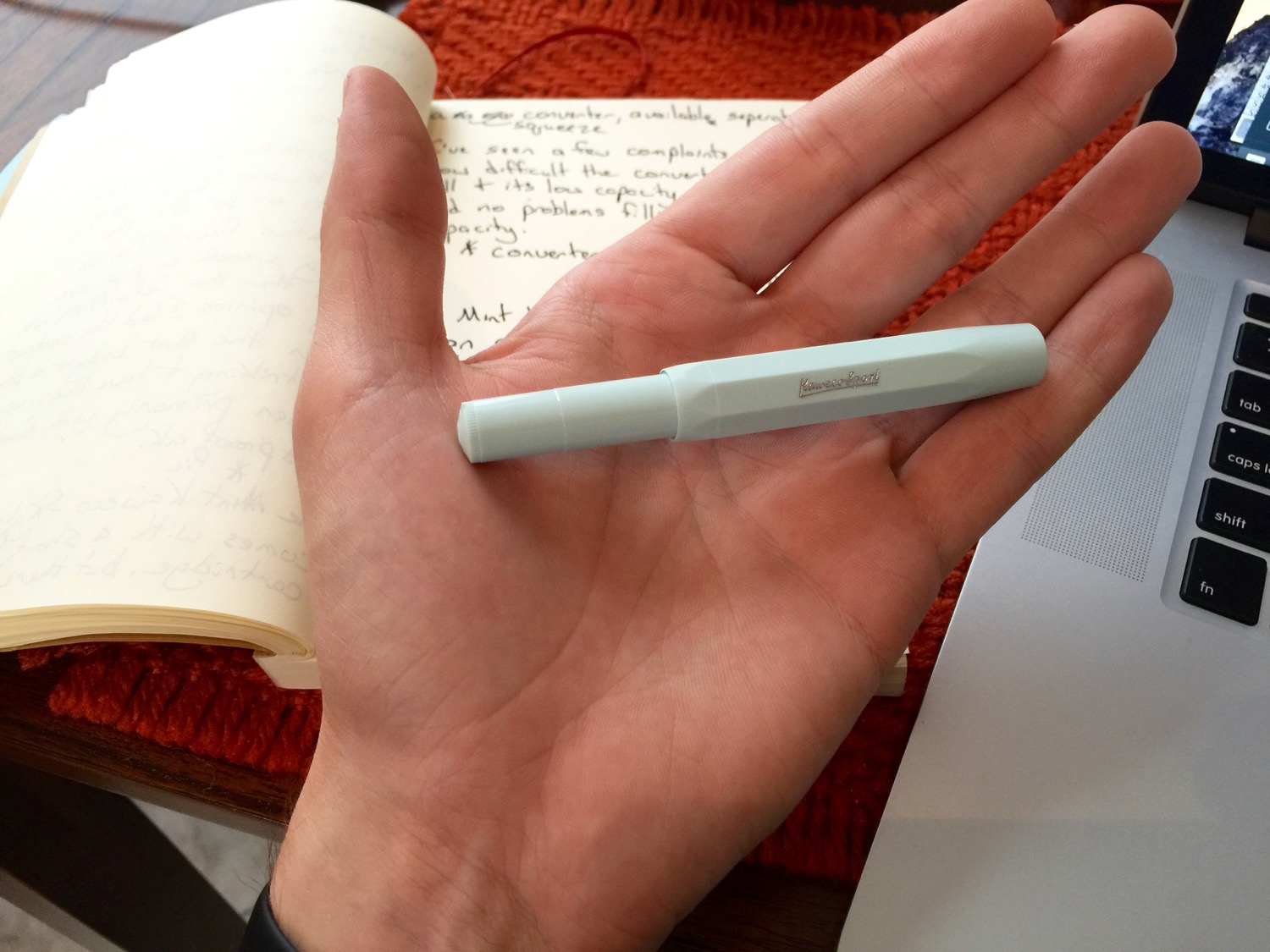The Pilot Metropolitan is the quintessential fountain pen. Its simple black body is sleek and businesslike, tapered on both ends with little decorations, aside from a shiny black band of plastic around the barrel. The pen's brass body gives a nicely weighted feel. The Metropolitan's slick design and thoughtful packaging give it the appearance of a $50 pen, a pen that I would feel comfortable carrying in a suit pocket while attending a fancy conference or important meeting. I can't say the same about my Safari.
The cap of the Pilot Metropolitan uses a snap-fit mechanism. I normally prefer threaded caps; however, the Metropolitan provides a satisfying click. The cap feels magnetic as it powerfully clicks into place and takes a bit of forced to uncap. There's no need to worry about the pen coming uncapped in a pocket of a bag; it simply isn't going to happen. Although capping and uncapping the pen is satisfying, the pen's posting performance is surprisingly poor. The cap wiggles while writing, unless it's smashed down onto the barrel of the pen. Fortunately, the pen is very comfortable to write with while unposted.
The Pilot Metropolitan is my first Japanese fountain pen. I read that Japanese nibs run fine compared to European nibs, so I wanted to compare the "fine" of the Metropolitan with the "fine" of my Kaweco, TWSBI, and Lamy. I've never written with a hypodermic needle before, but I bet it's much like writing with the Pilot Metropolitan for the first time. The nib scratched across the page, leaving a razor thin line, but pulling up bits of paper with it. The scratchiness went away after a few minutes of writing, but the fine line remained. The Pilot Metropolitan "fine" is dramatically finer than the "fine" of any of my European fountain pen nibs. Those looking for a similar line as a European fine nib would probably prefer the medium nib version of the Pilot Metropolitan. Despite my preference for a thicker line, the Metropolitan lays down a juicy consistent line and slides across the page effortlessly, which is surprising for its tiny nib.
The grip of the Pilot Metropolitan leaves much to be desired. The slick plastic become slippery and uncomfortable after long writing periods. This wouldn't be as much of an issue, but the grip is also very thin, which makes it hard for larger hands to grasp firmly. I know from experience. The grip mirrors the shiny black band around the pen barrel and is separated by a metal midsection. The pen is just as stunning uncapped as it is capped.
The Pilot Metropolitan is shorter, with a thinner grip than the Lamy Safari. Despite its smaller stature, the Metropolitan has more heft, due to its brass body.
The Pilot Metropolitan comes with both a squeeze converter and a cartridge. I greatly prefer piston converters to squeeze converters, and the Pilot's converter reinforces this preference. The squeeze converter has a metal strip that runs along the converter and can be pinched to ensure that the converter takes as much ink as possible. This is an improvement over similar squeeze converters, like Kaweco's converter for its Sport line. Unfortunately, the converter is opaque, which makes it very difficult to tell whether or not it's completely filled. This combines with a small converter capacity to provide a poor filling experience.
At $20 or so, it's really not a question of whether or not to buy a Pilot Metropolitan. You will own one of these pens eventually. For most, the question is whether or not this should be your first fountain pen. If you're looking for a sleek but professional-looking pen to take to your jobby job, this isn't a bad place to start. It's a well-performing pen that's well built and sturdy. This is probably where I should end the review, but there's something that's been nagging me about this pen.
No one could argue that the Pilot Metropolitan isn't a very good pen for the money. The problem is, the Metropolitan just isn't very interesting. The mint Kaweco Skyline Sport was my first heavy-use pen, and I still find it so exciting to use. The color is unique, and the retro touches make it fun to use and look at. It's not a perfect pen, but it's memorable. I would never confuse a Kaweco for another brand of fountain pen. The same goes for my Lamy, with its divisive grip design, and TWSBI, with its clever nib mechanism. I've had several people compliment my Kaweco and TWSBI 580, but no one has even noticed my Metropolitan. Although the Metropolitan is a safe introduction to the world of fountain pens, it's not a very fun one.
I started writing with a fountain pen because I wanted to have fun while writing, to motivate myself to take notes and improve my handwriting. To me, quirky and unique pens are what make this hobby attractive, and this pen simply isn't either of those. The Pilot Metropolitan is a very good pen, and you'll like it if you buy it. It's only fair to note that the pen comes in a few colors and design variations, but they do little to make the pen more exciting. The question is, do you want a pen that you'll like, or do you want a pen that you'll love? I want a pen that I love to use, even if it has flaws. It's oftentimes the outrageous design choices that make pens interesting, and the Metropolitan plays it so safe that it's completely forgettable. The Pilot Metropolitan is merely a stepping stone to far more interesting writing experiences.
*The plain black version of the Pilot Metropolitan is not currently available on JetPens, so this is an Amazon Affiliate link.




































